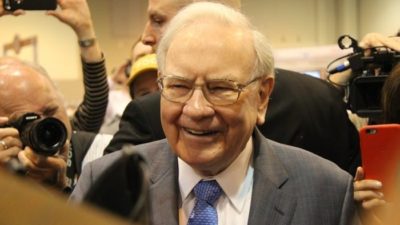The price-to-earnings (P/E) ratio is one of the most oft-quoted statistics in the world of investing, usually coming after an ASX share's price, and perhaps its market capitalisation.
This is justified to an extent – the P/E ratio can be a very useful metric to examine when you're deciding whether to invest in a particular company. But it can also be misleading. So let's look at some ways to use the P/E ratio, and when you shouldn't.
P/E ratios: An introduction
So let's first examine exactly what the P/E ratio tells us. The ratio represents the relationship between a company's annual earnings, measured by its earnings per share (EPS), to its market capitalisation, measured by the share price. A company with a high P/E ratio will have lower earnings compared with its market capitalisation than a company with a low P/E ratio.
Let's look at an example. So Coles Group Ltd (ASX: COL) reported an earnings per share metric of 73.3 cents for FY2020 back in August. That means the company brought in 73.3 cents in earnings for every share outstanding. So at the time of writing, the Coles share price is trading at $18.35. If we divide $18.35 (the price) by 0.733 (the earnings), we get a P/E ratio of 25.03.
How do we use this ratio?
The P/E ratio can be especially useful for comparing different companies within the same sector, or comparing a company to the broader S&P/ASX 200 Index (ASX: XJO). A dollar of earnings is a consistent metric (since every dollar is worth the same value across all companies).
Thus, since Coles has a P/E ratio of 25.03, and its rival Woolworths Group Ltd (ASX: WOW) currently has a P/E ratio of 43.66, we can say that the market is valuing each dollar that Woolworths earns at a higher rate than Coles'. In other words, the market is placing a premium on Woolies' shares (why the market is choosing to do this is a whole other discussion!).
The ratio can be useful from a broad market perspective too. Right now, the ASX 200 Index has an average P/E ratio of 22.73, according to BlackRock. Thus, we can also say that investors are placing a higher premium on both Coles and Woolworths when compared to the entire index.
When is the P/E ratio not so useful?
Looking at the P/E ratio alone, however, is not a sound investment strategy. Investors tend to price different sectors according to their earnings risk. For example, Fortescue Metals Group Limited (ASX: FMG) currently has a P/E ratio of just 11.2, despite the company being at record highs. This could possibly reflect the fact the market is unwilling to pay a premium for an iron ore miner that is subject to the whims of the commodity markets (read low long-term earnings certainty).
Also, the P/E ratio is almost useless for valuing companies that don't yet have earnings or which reinvest revenues aggressively for more growth. As an example, Afterpay Ltd (ASX: APT) doesn't even have a P/E ratio yet because it chooses to reinvest its revenues into the business, rather than banking them as earnings.
And many investors are choosing to buy Xero Limited (ASX: XRO) shares right now due to the company's massive growth, despite a technical P/E ratio of a whopping 641. If Xero simply switched from reinvesting its revenues to banking earnings, its P/E ratio would come back closer to Earth.
Foolish takeaway
The P/E ratio is a great metric, and a highly useful one in certain situations. But it possibly doesn't deserve the prominence it has among parts of the investing community. Its lack of universal application and potential for creating misleading impressions of a company mean it should be carefully regarded in conjunction with plenty of other data and research.








